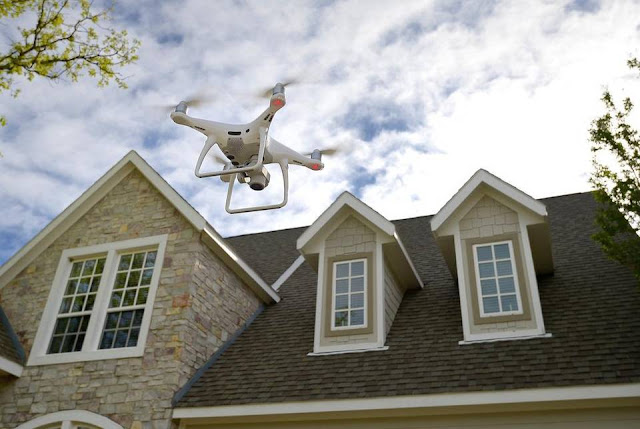4 Cool Things You Didn’t Know Drones Could Do
Many of today’s consumers consider drones to be objects for recreational or governmental use. Drones are very powerful flight systems that can transport from one location to another, carrying items while recording along the way. As technology progresses, it seems their are limitless capabilities for what drones can achieve. Startups and major corporations are pushing the boundaries of tech to see how far they can take their drones.
One thing is for sure: drones will be a large part of our future, and much more commonplace in everyday life. And that could happen a lot sooner than you think. Here are a few things drones can do that you might not have known about:
Make Repairs
Believe it or not, you can get home repairs done quicker and much easier with the help of drones. One company, Drone Base, aims to inspect your roof with a drone to help you make better decisions about claims and inspections. Using powerful aerial imagery, these worker drones are able to conduct roof inspections cheaper and more effectively than traditional roof inspections. It achieves this by reducing the inspection cycle, gathering detailed imagery for underwriting, and creating a desk adjustment solution. This provides homeowners and businesses with the power to settle claims even faster.Roofs aren’t the only thing drones are capable of fixing. On a similar note, the U.K government has already commissioned drones to locate and fix small repairs around the city. The Engineering and Physical Sciences Research Council (EPSRC) granted the University of Leeds $6.4 million to develop drones capable of identifying and repairing potholes, damaged streetlights, and utility pipes.
Plant Trees
With a little help from drones, there will be many more trees planted. BioCarbon Engineering, a UK-based startup, partnered with Worldwide International Foundation to help restore ecosystems around the world by planting trees. Hand-planting seeds is a slow and expensive process, and the company is positioned to replace the demands of going the laborious route. The drones are 10x faster than humans, and cost half as much to operate.For example, villagers in Myanmar along the Irrawaddy River took five years to plant 2.7 million mangrove trees, while drones are capable of planting up to 100,000 trees in just one day. To date, they’ve helped the same villagers cover an area twice the size of Central Park with trees, and are slated to plant another million. Their ultimate goal is to plant one billion trees.
The drone’s technology is layered and complex, covering ground in three different stages. It begins by flying over the land to collect data about the soil quality and topography. This is how it determines the best location for tree-planting. It then gets closer to the ground to designated pods designed by scientists. These pods are filled with proper nutrients for each tree, depending on the species. Lastly, it locates and fires the seeds at a rapid pace powerful enough to penetrate the soil.
Provide Internet Access
There are big plans for drones to have Internet-carrying capabilities. Facebook leads in this arena, with their plans to produce solar-powered drones capable of delivering Internet access to areas of the world where it’s limited or non-existent. In June 2017, their high-altitude drone, named Aquila, successfully completed its second test run. The drone was able to ascend at 180 feet per minute, but the real power lies in how long it can stay suspended in air. While it only flies 10-15 miles per hour, by staying above a certain area for long periods of time, it can provide Internet more reliably. According to Facebook, it runs on power that’s equivalent to the amount of three blow dryers.Deliver Packages
Amazon has been busy with its drone ventures, and shows no signs of slowing down. Amazon delivered its first package via drone in 2016, which consisted of an Amazon Fire TV and bag of popcorn. The order took 13 minutes to deliver from the moment it was purchased, sent to a customer who lived near Amazon’s testing facility. To start, Amazon will send packages to rural areas, and eventually work its way into cities.The company was also recently granted a patent to send out drones that carry charging power for electric cars running low. Through this process, a “charger” is placed on top of the car that acts as a landing pad for drones, which fill refuel the car before taking off to another location for another transfer of energy.








 TechQuark is a mobile-friendly website. Simply bookmark
TechQuark is a mobile-friendly website. Simply bookmark 